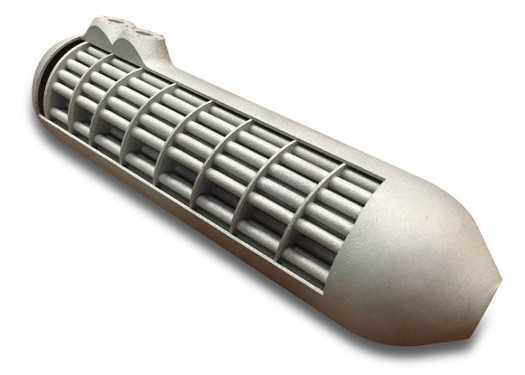 |
| June 21, 2016 | Volume 12 Issue 23 |
Designfax weekly eMagazine
Archives
Partners
Manufacturing Center
Product Spotlight
Modern Applications News
Metalworking Ideas For
Today's Job Shops
Tooling and Production
Strategies for large
metalworking plants
New collaboration pushes boundaries of metal 3D printing
From energy-efficient jet engines to personalized medical devices, companies can quickly and easily design and manufacture cutting-edge, safe, and reliable products thanks to a new collaboration between ANSYS and the University of Pittsburgh (Pitt). The partnership will further education and research to solve some of the industry's toughest additive manufacturing problems.
Advances in additive manufacturing technologies are drastically changing the industrial manufacturing landscape. Forward-thinking companies are rapidly adopting new emerging technologies to gain significant competitive advantages to produce complex and customized products that were not possible to build before the advent of additive manufacturing. While additive manufacturing holds incredible promise, there are still significant hurdles to overcome before it can broadly replace existing manufacturing methods.

If this heat exchanger were manufactured by conventional methods, it would comprise an assembly of over 100 individually manufactured components. By making some minor additive manufacturing design changes and utilizing the EOS M290 direct metal laser-sintering machine, the heat exchanger assembly was made using additive manufacturing as a single component. [Credit: University of Pittsburgh]
Printing metal is particularly challenging, because it involves the use of a laser. While the laser optimizes the density of the metal for the particular application, it can also melt the metal in unexpected ways, causing the product to fail. And the rapid heating and cooling causes stresses that can deform the end product. ANSYS and Pitt are working together to simulate those deformations before printing to ensure the product not only has the desired shape, but also performs as expected.
As part of the partnership, the university is opening a 1,200-sq-ft additive manufacturing lab in the Swanson School of Engineering. The ANSYS Additive Manufacturing Research Laboratory is equipped with some of the most advanced additive manufacturing devices that utilize metals, alloys, polymers, and other materials to laser print components for nearly every industry.
The partnership will also support faculty and students conducting collaborative research with ANSYS and other industry partners, including those in the biomedical, aerospace, and defense industries. Lab workers will have access to the ANSYS portfolio, enabling them to explore, simulate, and analyze solutions for stress and fatigue on critical components that go into products such as airplanes, cars, and medical devices.
Additive manufacturing for the real world
Additive manufacturing allows for precise control in creating a component at the micro- and nano-scale level, but new processes and software are required to help engineers develop parts that are designed to perform a desired function under a set of conditions. Simulation-driven product development changes the process by virtually exploring the properties of a number of design options early on, before committing to specific material and design choices.
The benefit of physics-based computational tools is that they can test millions of permutations of designs, materials, flows, and shapes to find the optimal design before the engineer needs to build a single physical prototype. Not only will this new approach unleash the next wave of innovative physical products, but it is a necessity to make designs more energy efficient and sustainable.
ANSYS and Pitt's collaborative work in this area was initiated with funding from the federal government via America Makes (the National Additive Manufacturing Innovation Institute). Pitt's research includes the development of new tools to optimize the interior construction of a manufactured part at the microscopic level, thereby improving strength and structural integrity, lowering weight, reducing costs, and improving sustainable production methods.
Since 2014, additive manufacturing researchers at the Swanson School have attracted more than $6 million in grants from America Makes, the National Energy Technology Laboratory, the National Science Foundation, and Research for Advanced Manufacturing in Pennsylvania. The partnership with ANSYS will enable faculty to not only benefit their research, but to help ANSYS improve its own engineering simulation software. This partnership will enable these two organizations to address key challenges that are currently blocking additive manufacturing from realizing its full potential.
Source: ANSYS
Published June 2016
Rate this article
View our terms of use and privacy policy
